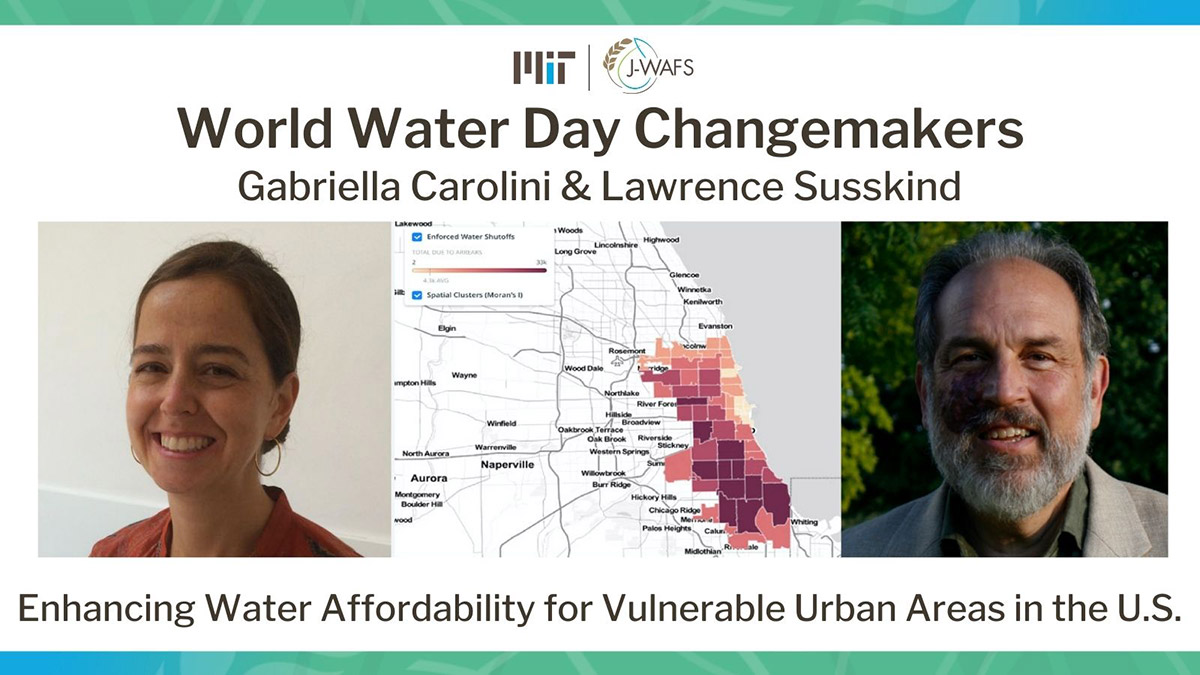News World Water Day 2022 Research Highlight: Enhancing water equity and access programs
Gabriella Y. Carolini and Larry Susskind of Urban Studies and Planning are examining how to help those who are the most vulnerable to water inequities in urban America.
Carolyn Blais, J-WAFS March 22, 2022

In 2020 Gabriella Y. Carolini, associate professor of urban planning, and Lawrence Susskind, the Ford Professor of Urban and Environmental Planning, began a J-WAFS funded seed grant project to answer the question: How can greater household water affordability in U.S. cities be achieved?
Urban households across the United States and the water departments that serve them are under tremendous financial pressure to maintain access to safe drinking water. With the exception of President Biden’s recent bill, there has been diminished federal support for water infrastructure investments and stagnant state-level subsidies over many years. As a result, municipal water departments have raised water rates for users in order to keep up with the rising cost of delivering water that meets state and federal standards. Without adequate provisions for low-income households, this has caused a growing water poverty cycle in cities across the U.S. where poor urban households experience water shut-offs that often end with home foreclosures.
Carolini and Susskind are trying to understand the relationship of water shut-offs to water-based housing poverty and foreclosures so that they can build tools to inform key stakeholders of the resources and programs that may be available to help.
Thus far the researchers have worked to:
- Aggregate data and conduct targeted spatial analysis of eight case study utilities in cities like Seattle and Chicago in order to explore the structural determinants of the water affordability crisis, as well as the dimensions and capacities of Customer Assistance Programs (CAPs) that utilities currently offer
- Develop a spatial regression model with which to analyze collected data and compare it with other socioeconomic data from the American Community Survey. This approach is intended to help utilities understand their performance across their city and whether specific household characteristics are indicators of vulnerability to water shutoffs or water affordability challenges
- Produce two methodological guides: one for water utility staff and another for non-utility interested stakeholders. The guides offer insights into how to reproduce Carolini and Susskind’s spatial analysis for revealing where and which characteristics of households are prevalent among those experiencing water affordability vulnerabilities
- Collaborate with utilities and organizations to address customer affordability challenges and understand how flexible payment plans and other interventions can help solve some of the problems of water equity
